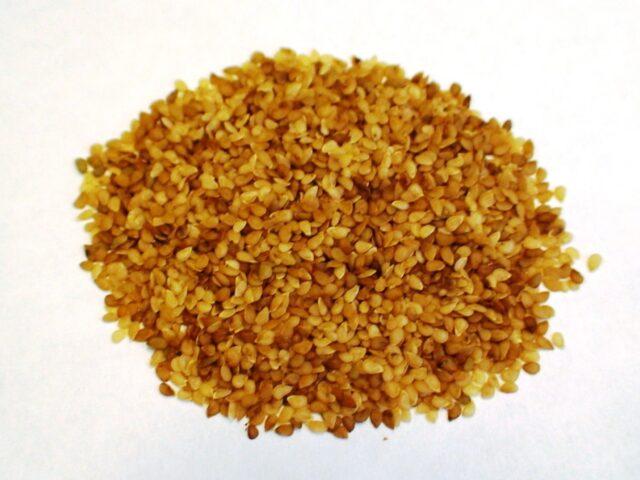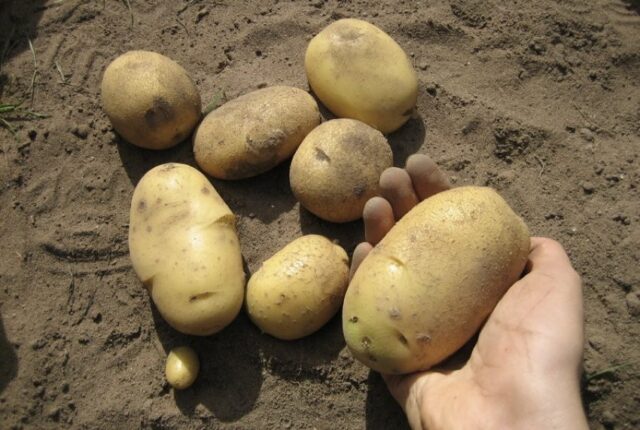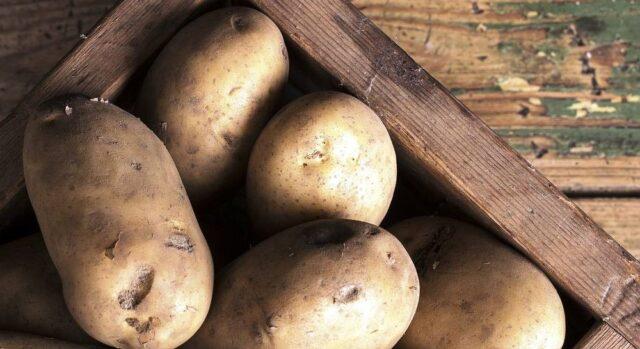Content
You can collect potato seeds yourself. Work begins in mid-July, when the berries are still light green in color and do not begin to darken. They are crushed into a pulp, poured with water at room temperature and left to ferment for several days. Then the planting material is collected and stored until next spring.
Which varieties are suitable for propagation by seeds?
Many varieties of potatoes are suitable for growing from seeds. The main varieties are described below:
- “Assol” - produces a harvest from mid-July to early August, it is at this time that they begin to collect seeds. The tubers are oval, the skin is smooth, light yellow in color. The pulp is approximately the same shade. The variety is resistant to diseases and also produces a large harvest - up to 3-3.5 kg per bush. The root vegetables are large, weighing from 100 g. The mass fraction of starch reaches 16%, so the potatoes are quite crumbly and tasty.
- “Farmer” ripens in 65 days and produces 12-15 tubers per bush. The skin is light yellow, the weight of one potato is within 100 g. The yield indicator is up to 1 kg per bush.The pulp does not boil over and holds its shape well, so the potatoes are suitable for frying. The variety is resistant to viral infections.
- “Triumph” is an early crop, the seeds of which can be collected in early June. The roots are oval, small in size, and the skin is pale yellow. Productivity up to 400 kg per hundred square meters. The bushes produce a lot of potatoes - often up to 30 pieces. The pulp is creamy, moderately soft, suitable for boiling and baking.
- "Empress" is also suitable for collecting seeds for seedlings. The crop is productive - 3-3.2 kg are harvested from each bush, while the weight of one tuber ranges from 60 to 150 g. The harvest begins in July, and the last wave occurs in September. The variety is immune to fungal infections and nematodes.
- "Velina" is another potato variety suitable for collecting seeds for seedlings. The tubers are oval-shaped, medium-sized, and ripen in August. The color of the peel and pulp is the same - light yellow. The taste is excellent, the potato is a universal purpose. Can be used for both boiling and frying. Is immune to viruses and fungi. The yield is average - up to 370 kg per hundred square meters.
- “Ilona” is a type of potato whose seed collection begins in July. Tubers ripen in August, and the first harvest can be harvested in mid-summer. The pulp is crumbly and has a pleasant taste. The culture adapts well to different climatic conditions and is immune to common pathologies. The yield indicator is up to 400 kg per hundred square meters. "Ilona" is one of many potato varieties suitable for growing from seeds.
- "Revenge" - potatoes with large root crops, used for growing on an industrial scale.The root crops are round-oval, characterized by large sizes (average weight 120 g). The peel is light yellow, the flesh is creamy. The taste is excellent. The species has satisfactory immunity to many diseases.
Benefits of planting seeds
Seeds are collected in order to plant them for seedlings. This method of growing potatoes is not very common, but it definitely has several advantages:
- The seeds are much more affordable, and collecting them yourself is completely free.
- Storing them is very simple - no cellars or storage rooms are needed.
- Planting material after collection is not affected by diseases or pests, so no chemical treatment is required.
- Tubers grown from seeds after harvesting are characterized by good resistance to weather factors.
- Potatoes do not degenerate and retain their varietal qualities.
- In the first two years of planting, the tubers are as large and tasty as possible.
However, there are also disadvantages. The main disadvantage is that after harvesting you have to grow seedlings, which is much more difficult than planting tubers. For a normal harvest, it will take two seasons - first, planting tubers are obtained, and then the usual bushes are grown from them.
How to prepare potato seeds at home
Getting potato seeds from berries is quite simple. To do this, you need to follow the preparation times and the main steps of the instructions described below.
Time to collect potato seeds
Potatoes produce flowers as early as June, after which round berries called bulbs form in their place. They appear in large quantities (up to several dozen per bush), the color is first light green, after which it becomes dark brown.

Harvesting begins in mid-summer, when the fruits are still light green.
In order to properly prepare potato seeds from berries, the procedure should begin in the first half of July. The fruits should be unripe, and their surface should remain light green. If they begin to darken, they must be collected immediately to prevent final ripening.
How to get potato seeds from berries
Extracting potato seeds from berries is easy. This process is similar to harvesting tomato seeds, since potatoes and tomatoes belong to the same nightshade family. The step-by-step instructions are as follows:
- Pick the bulbs to collect the seeds.
- Lay them out in one layer or put them in a gauze bag and hang them in the room.
- Wait a few weeks for the fruits to soften.
- Next, you need to start collecting - soften the fruits to a pulp.
- Add a little water to make it easier to select potato seeds from the berries.
- Place in a warm place for 2-3 days. During this time, the seed shell will be destroyed, thanks to which they will be able to germinate faster in the future.
- Wait for the pungent smell and air bubbles to appear on the surface - as soon as there are a lot of them, it’s time to collect the potato seeds.
- The gruel is again filled with water and waited for a few minutes. Suitable seeds will settle to the bottom, and empty ones will float to the surface.
- Strain through cheesecloth and collect good seeds.
- Rinse them under water to remove any remaining berries.
How to store collected seeds
When harvesting potato seeds from bulbs, it is very important to create suitable storage conditions.To do this, they are laid out in one layer and left for several days to dry completely.
Then they are laid out in paper envelopes, on which the name of the variety and the date of collection are indicated. Store in a cool room under the following conditions:
- temperature in the range of 12-16 degrees;
- lack of direct sunlight;
- moderate humidity (up to 70%);
- periodic ventilation;
- absence of rodents and insects.

Seeds are stored in moderately cool conditions
Conclusion
Collecting potato seeds is quite simple - the work is carried out in several stages. As a result, by mid-August it will be possible to obtain a lot of grains (up to 200 from one bulb). They are used to grow seedlings, which in two seasons will be able to provide a good harvest of truly tasty potatoes.















